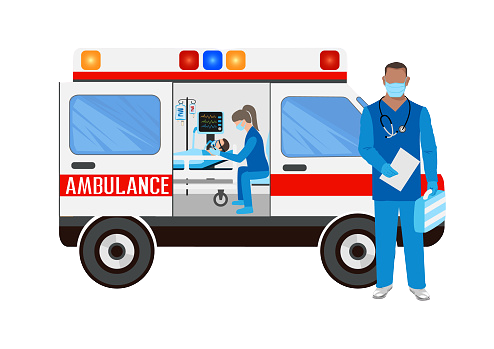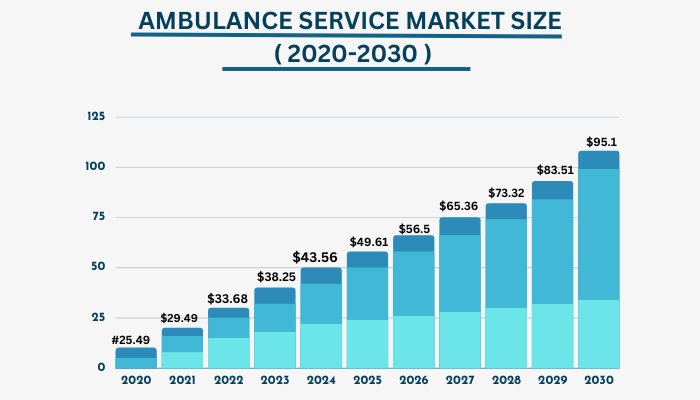Project Report For Ambulance Service
Introduction
Ambulance service project report is as follows.
An “ambulance service” is when patients are driven by an ambulance to healthcare institutions like hospitals. Vehicles with medical equipment are called ambulances. The patient usually receives outpatient care while being transferred.
The rise in medical issues has led to an increase in hospitals and emergency medical services. These services make it possible for people who require urgent medical attention to reach the hospital in time, saving their lives. Today, there are more private and public ambulance transport services available as a necessary service to care for people in need at critical times.
At each hospital and private EMS, ambulance operational centers have been established. The main providers of a round-the-clock response to medical and trauma-related emergencies are ambulance services. They offer a structured and organized system that enables fast dispatch of medical professionals with the necessary training, frequently in reaction to impending or actual medical emergencies.
Despite the fact that large trauma centers have medical retrieval teams, coordination of the team is handled by the ambulance communications center, which is often staffed with intensive care paramedics.

Ambulance services provide the tools, expertise, and experience required for emergency intervention, assessment, management, and patient transport in a variety of controlled, uncontrolled, and catastrophic circumstances.
Ambulance services are most suited to give these services as a whole, Modern ambulance services today feature cutting-edge, 24/7 call centers staffed by medical professionals with years of experience and sophisticated training as call takers, dispatchers, and telephonists.
This is offered by qualified onlookers and trained medical staff, such as paramedics and emergency medical technicians. A Basic life support (BLS) ambulance has necessities including a patient bed, a pulse oximeter, and oxygen delivery equipment and is generally used for patients who need medical transportation.
Stretchers that automatically load wheelchairs are also available for effective patient management. For patients who have had any type of surgery, are ill, and/or are frail this emergency service is excellent.
Project Report Sample On
Ambulance Service
Get Completely Custom Project Report
The cardiac care ambulance sometimes referred to as advanced life support (ALS) ambulance, is outfitted with a ventilator, defibrillator, oxygen tank, electrocardiography (ECG) machine, and monitoring equipment. These ambulances are mostly used to respond to life-threatening situations, such as sudden cardiac arrests and situations when critically ill patients need oxygen and breathing assistance. With these cutting-edge characteristics, ALS ambulance services are better prepared to deal with life-threatening circumstances, including cardiac arrests, lung-related problems, and rescue operations.
Market Potential Of Ambulance Service
The market size for ambulance services worldwide was estimated at US$ 29.49 billion in 2021 and is projected to increase to approximately US$ 95.1 billion by 2030, with a projected CAGR of 13.9% over that time. Emergency medical services like ambulances carry individuals who need immediate medical attention due to illnesses or accidents.
In order to give patients the best care possible, ambulance services are transported to the area using specialized water, ground, and air vehicles. These services are connected to and integrated with communication and transportation networks, specialty care facilities, hospitals, trauma centers, and rehabilitation facilities.
They work with patient care technologies including basic life support (BLS) and advance life support (ALS) and are used in both emergency and non-emergency situations (ALS).

The increasing frequency of traffic accidents, the rise in medical tourism, the growing elderly population, and favorable reimbursement policies are all contributing to the global ambulance services market’s growth. Road accidents are becoming more common, necessitating both emergency medical care and ambulance services.
Including the involvement of sectors such as emergency health services, which address safety measures in the event of any incidents. Furthermore, the growing popularity of air ambulance services, as well as a large number of private insurance patients, are expected to drive the ambulance services market forward.

